
Content Marketing and Conversion: How to Boost Sales with Your Blog [2025]
Investing in content marketing is a powerful way to attract organic traffic and increase brand awareness. But beyond visibility, did you know your blog can also drive conversions?
Many businesses focus on blogging for engagement, but your content can actively encourage sales with the right strategy. From guiding potential customers through the buying journey to showcasing your expertise, your blog can be a key player in turning readers into buyers.
Let’s dive into how content marketing and conversions connect—and how you can optimize your blog to boost sales.
1. Align Your Blog with the Buyer’s Journey
People turn to the internet for various reasons—whether they’re looking for information, solving a problem, or researching products and brands.
That means there’s a strong chance potential customers will discover your business through your resource pages. But for them to stick around (and eventually convert), you need to offer engaging, high-value content that meets their needs.
However, creating content that genuinely drives conversions isn’t as simple as publishing blog posts. To make your blog a powerful sales tool, you first need to understand your audience—what they expect from your brand and how they move through the buying journey.
Start by identifying your buyer personas’ key pain points at each stage of their decision-making process. Dig into their needs, aspirations, and priorities. Research industry trends and revisit audience data to pinpoint topics that will attract, engage, and guide them toward the next step.
By grounding your content strategy in real audience insights, you can craft blog posts that don’t just inform but actively support conversions at every stage of the sales cycle.
2. Select Topics that Address All Buyer Personas’ Needs
Once you’ve mapped out your buyer personas’ journeys and identified their interests and pain points, the next step is choosing the right blog topics.
A well-researched content strategy ensures your blog attracts potential customers and supports conversions—whether that means capturing leads or driving sales. Here’s how to approach it:
- Start with keyword research: Identify relevant search terms that align with different stages of the buyer’s journey. This helps shape your content calendar and ensures long-term optimization.
- Divide content into four key categories: Align topics with the four stages of the buying process: Awareness (educational topics), Evaluation (solution comparisons), Purchase (action-driven topics), and Loyalty (nurturing content).
- Target different audience segments: Even if some buyer personas make up a smaller portion of your market, addressing their needs can give you a competitive edge.
- Identify content gaps: Look for gaps in competitor content and fill them with valuable insights.
Example: Bay Alarm Medical
Bay Alarm Medical is a great example of a business that does an excellent job with its topic selection.
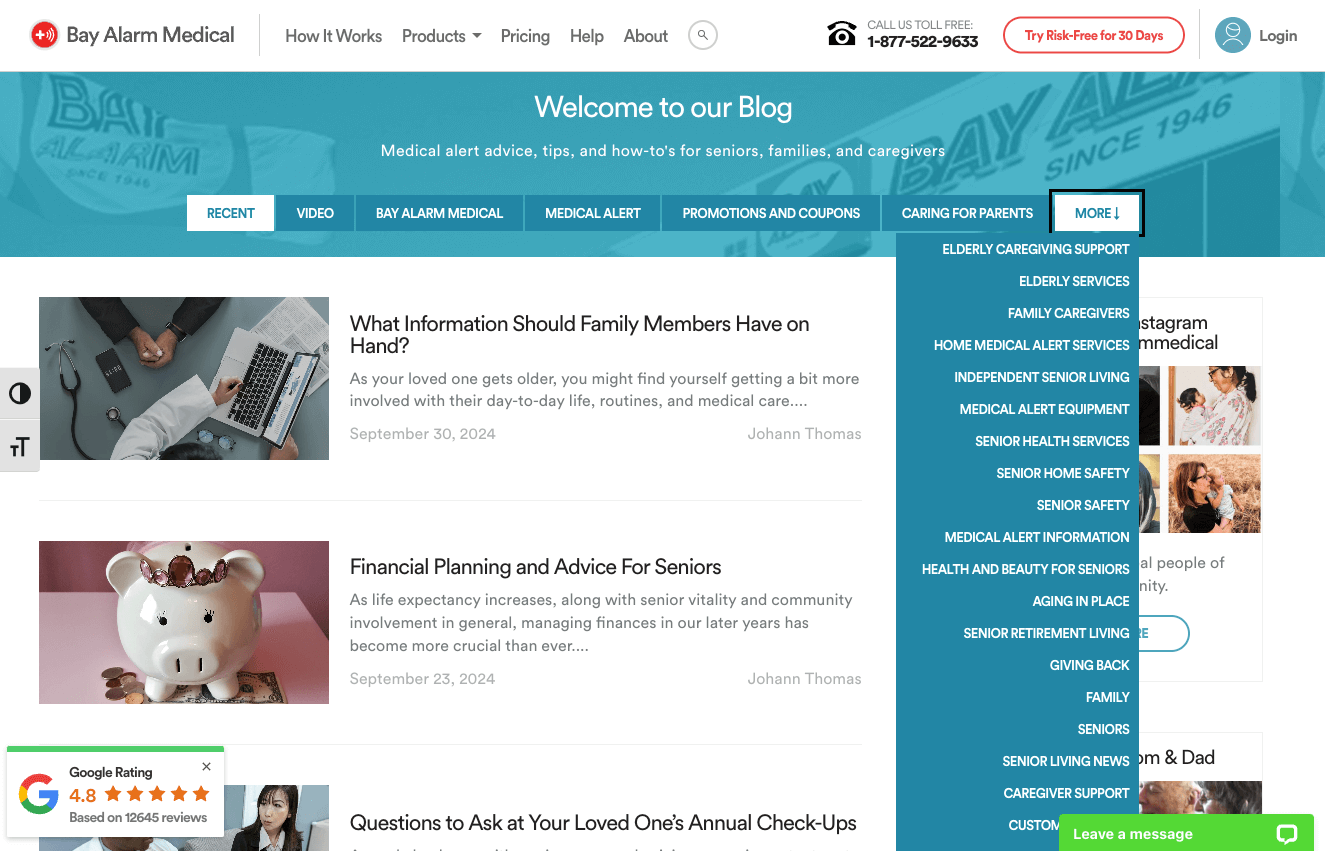
This brand effectively targets three distinct buyer personas by choosing topics that address the pain points of the elderly, their loved ones, and professional caregivers.
Their articles cover various subjects, including financial advice for seniors, elderly caregiving support, senior safety, medical alert equipment, and more.
This versatile approach to topic selection allows the business to attract multiple audience segments simultaneously while the high-quality content engages readers, establishes brand credibility, and encourages conversions.
3. Identify the Role Each Blog Post Plays in Conversion
Even with a well-planned content strategy, there’s one crucial step before writing: defining each blog post’s role in the conversion process. Every post should have a clear objective and align with its audience segment to drive meaningful results.
One of the biggest pitfalls in content marketing is using the wrong call-to-action (CTA) at the wrong time. Here’s what to watch out for:
- Overly aggressive CTAs in early-stage content: Using strong sales language in awareness-stage posts can drive readers away instead of encouraging engagement.
- Missed conversion opportunities in bottom-funnel content: For posts targeting ready-to-buy consumers, leaving out product links or “add to cart” CTAs can create unnecessary friction, causing visitors to drop off.
So, to ensure you don’t make a faux pas during this part of the content strategizing journey, do your best to understand which segments of your audience are most likely to read a specific post. Also, it’s crucial to gauge how boldly you can connect the content with a conversion mechanism.
For example, a blog post focused on brand awareness shouldn’t feel like a sales pitch. Instead of pushing products, the goal should be to introduce your brand, provide value, and position your business as a trusted authority.
Examples: REI, Pergola Kits & Transparent Labs
REI’s “How to Choose and Use Sunscreen” is an excellent example of a blog post that exists purely to draw traffic and create awareness of the brand as a trustworthy problem solver.
You’ll note that it’s perfectly optimized for informational intent without placing sales pressure on the reader.
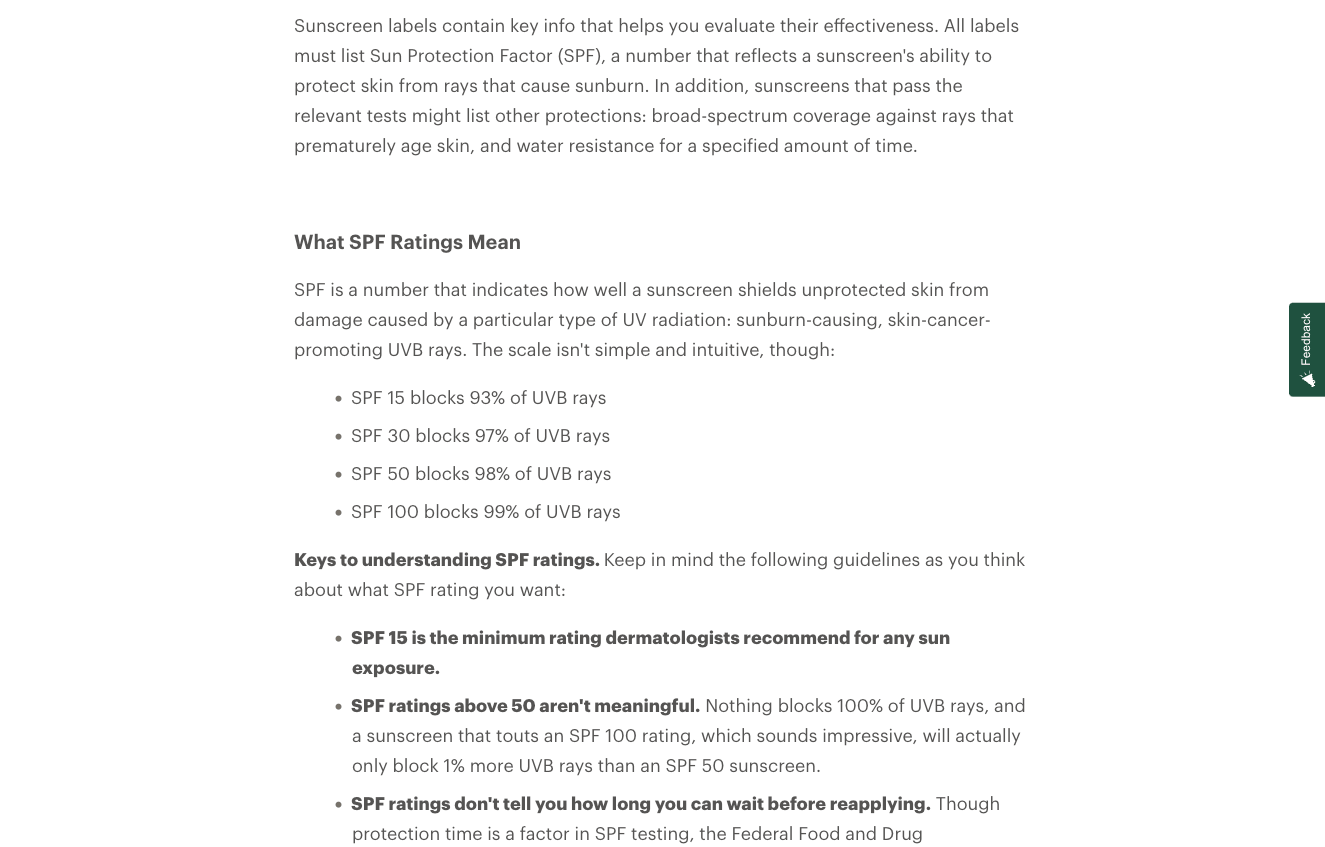
Alternatively, if you’re targeting consumers closer to the middle stages of the buyer’s journey, you could include subtle product mentions in your content.
Now, let’s see Pergola Kits’ “Transform Your Outdoor Living Space to Increase Home Equity” article.
You’ll notice that the blog post still prioritizes informational value. However, it also includes contextual product page links with minimal sales language.

Lastly, when trying to engage and convert consumers who are likely to make a low-risk impulse purchase, you can include strong calls to action in your content.
In these cases, you can directly position your products as the solutions to your readers’ pain points. You can even present web visitors with UI elements that allow them to convert without visiting any additional pages on your site.
If you check out Transparent Labs’ post on “How Long Does It Take to Rehydrate Your Body,” you’ll see that the brand repeatedly includes images of its product throughout the article.
But, knowing that this isn’t enough to truly enhance sales, the brand also places a direct product page link in a relevant section, where it’s most likely to lead to a purchase.
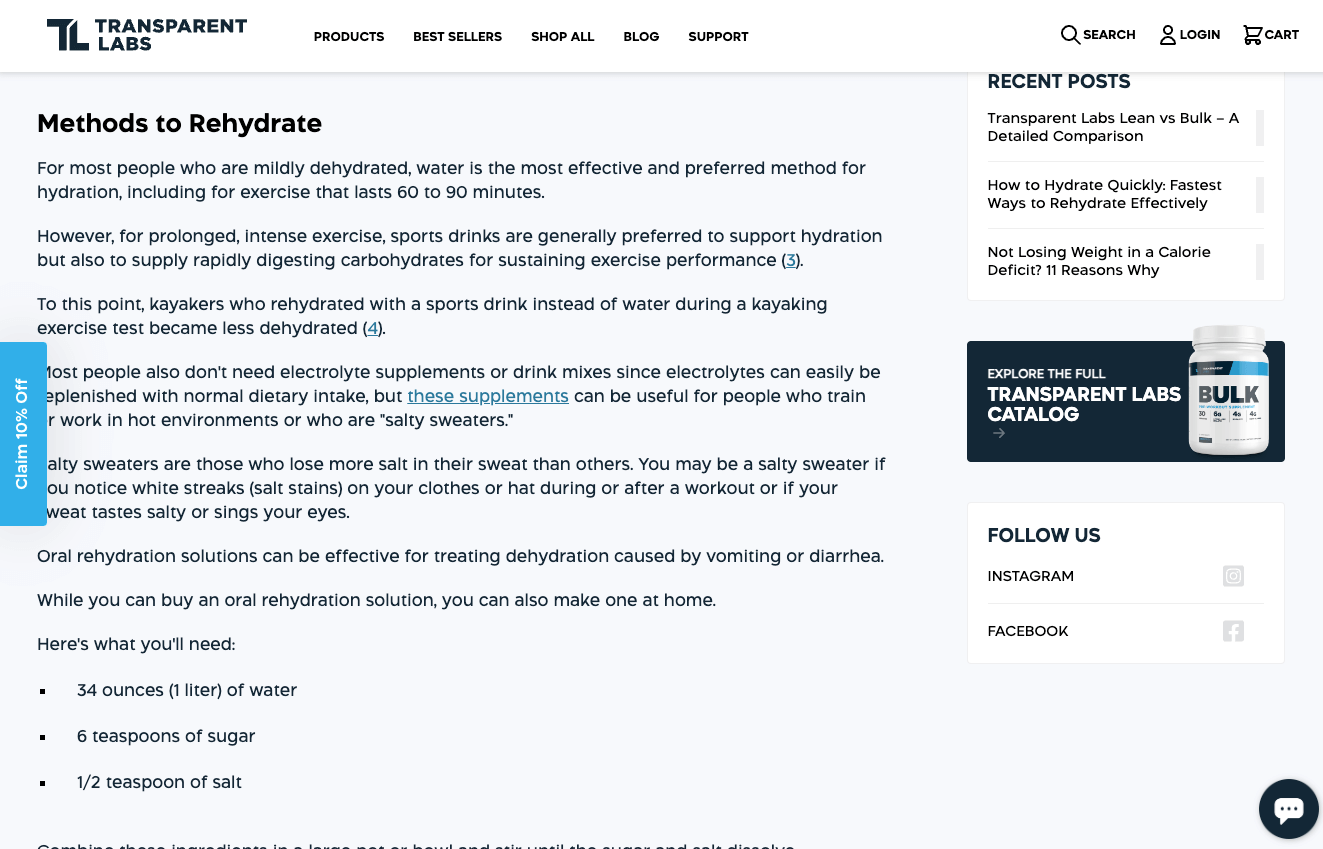
4. Provide Personalized Solutions with Interactive Content
Once you’re ready to start creating content, it’s important to invest your time and marketing budget in strategies that deliver the best results.
One powerful way to drive sales through your blog is through interactive content that provides readers with personalized answers and solutions.
Quizzes and calculators, for example, are highly engaging formats that attract awareness-stage consumers.
Plus, by incorporating a conversion mechanism—such as capturing contact details in exchange for results via email—you can seamlessly guide leads into your sales funnel.
To maximize the impact, an email marketing and marketing automation tool like Moosend can help automate this process—ensuring quiz results or calculator insights are delivered instantly via email while segmenting leads for personalized follow-ups.
This way, you can continue nurturing prospects with relevant content that moves them closer to purchasing.
Example: Doe
If you look at Doe, you’ll see that this brand follows this precise strategy to maximize content marketing conversion potential.
By inviting web visitors to find their perfect lash style, Doe effectively grabs their attention, learns about their wants and needs, captures them as leads, and presents them with personalized product recommendations that encourage purchases.
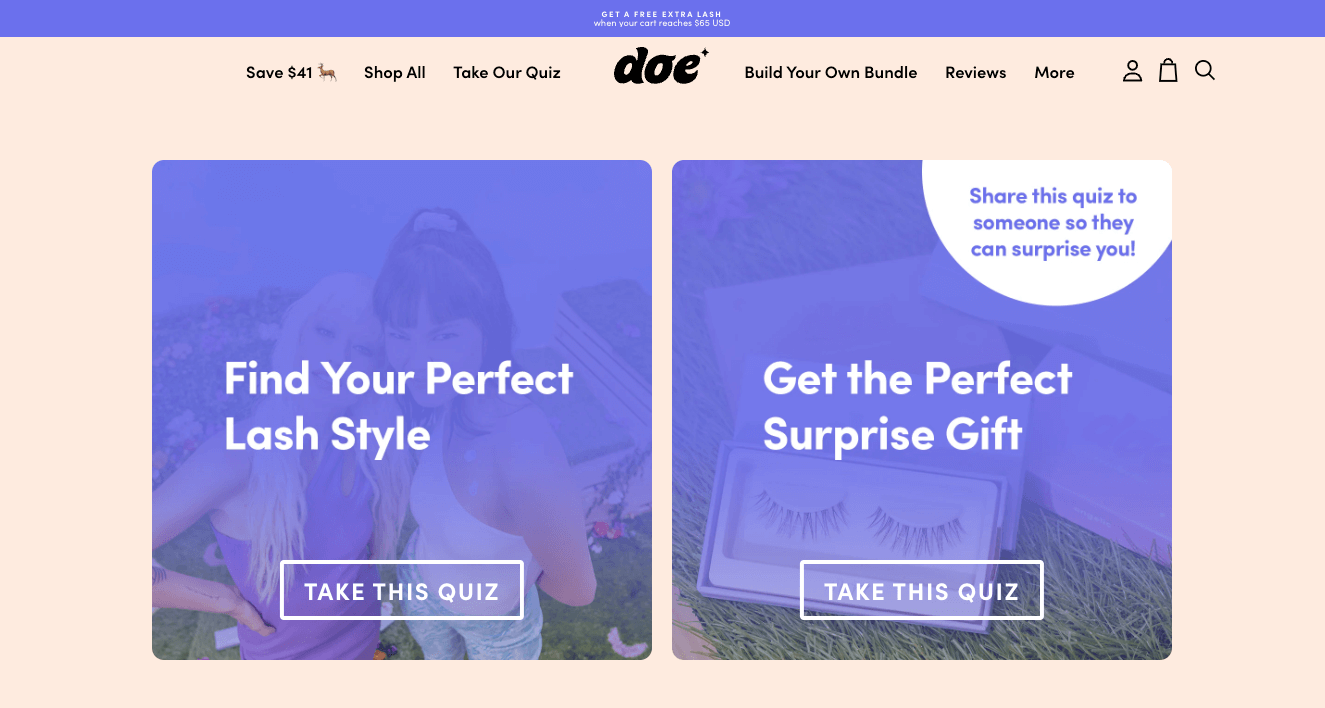
5. Highlight Your Products Effectively
With increasing product versatility, financial pressures, and the growing demand for brands to align with audience values, converting potential customers can be challenging. In some cases, these hurdles may seem difficult to overcome.
However, if you’re selling physical products—especially lifestyle items—you have one major advantage: online buyers rely heavily on product images when purchasing.
To maximize your blog’s conversion potential, use this space to showcase your products in the best possible light. Additionally, consider creating an aspirational connection with your audience—studies show that 39% of the global population identifies as aspirational buyers, meaning they seek products that align with their desired lifestyle.
Example: Modern Furnishings
Modern Furnishings does this spectacularly in its blog section.
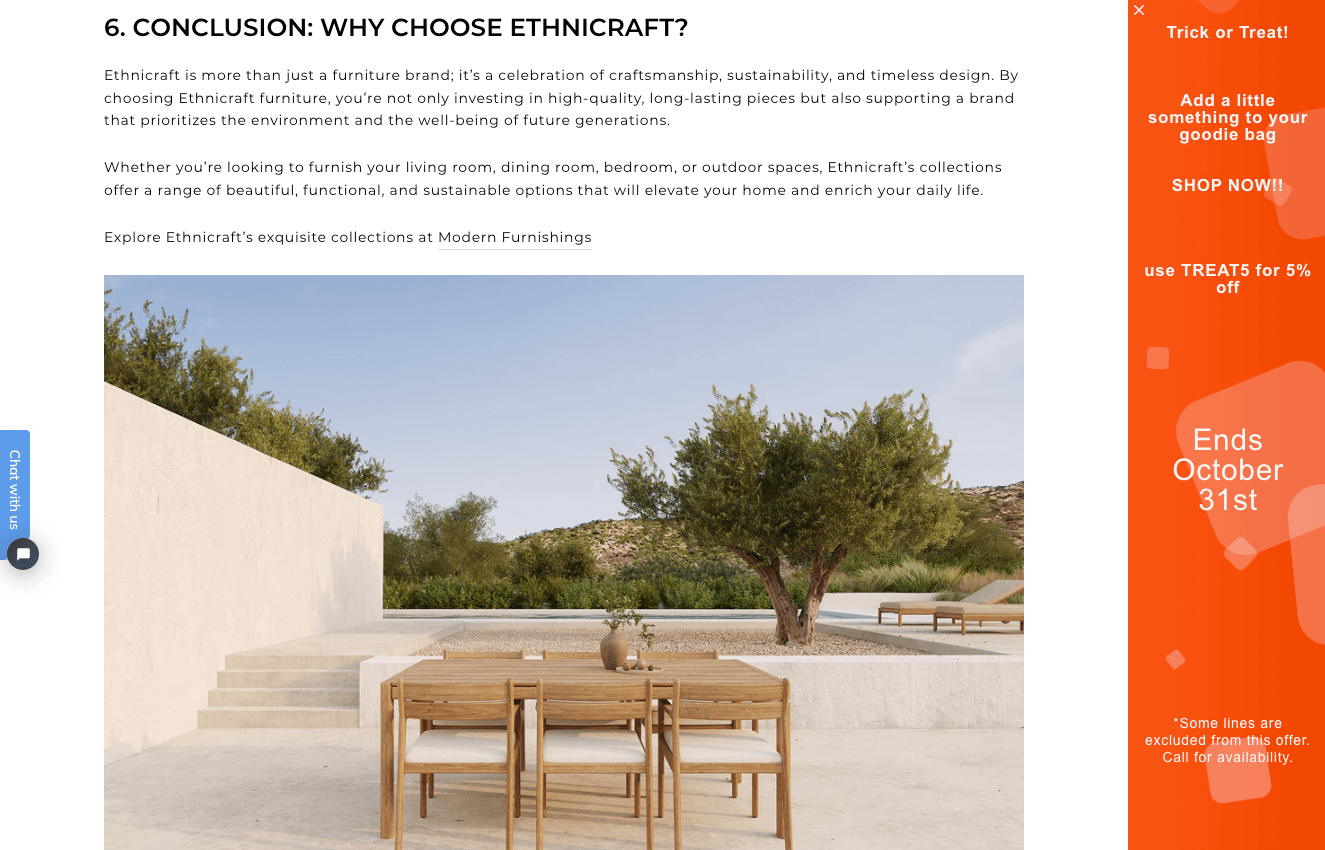
Here, the business presents readers with different furniture manufacturers, strongly emphasizing each brand’s unique aesthetic appeal, commitment to sustainability, or multifunctional approach to design.
The final result is content that expertly aligns consumer aspirations with specific products, but that’s not all. Thanks to a well-placed CTA at the end of the article, it also invites readers to explore the mentioned products (and hopefully purchase them).
6. Use Video Content in Your Posts
Another powerful way to create content that boosts conversions is by incorporating video. Video content is engaging, easy to consume, and can significantly influence purchasing decisions. Whether it’s a product demo, a customer testimonial, or an explainer video, well-crafted videos help build trust, showcase your offerings, and keep visitors engaged longer.
By integrating video into your blog posts, you can enhance storytelling, simplify complex concepts, and create a more immersive experience that resonates with potential customers.
According to research:
- 82% of consumers have purchased a product or service after watching a video.
- 89% of consumers want more video content from brands.
- 87% of people are more likely to trust a brand that produces high-quality video content.
- 44% of buyers prefer learning about products and services through short videos.
There are several ways to incorporate video into your blog strategy to boost engagement and conversions.
Turn your blog posts into videos to provide a visual summary, catering to different learning preferences and improving retention.
Embed product demos and tutorials to showcase how your offerings work, making it easier for potential buyers to see their value.
Lastly, feature customer testimonials and case studies to build trust and credibility, helping prospects feel more confident in purchasing decisions.
Example: Chisos
In their blog post, Chisos allows visitors to consume their content in video format. This results in a more engaging content page with a higher conversion potential.
It’s also a great way to facilitate product understanding, as multimedia formats provide much more educational value than plain text.
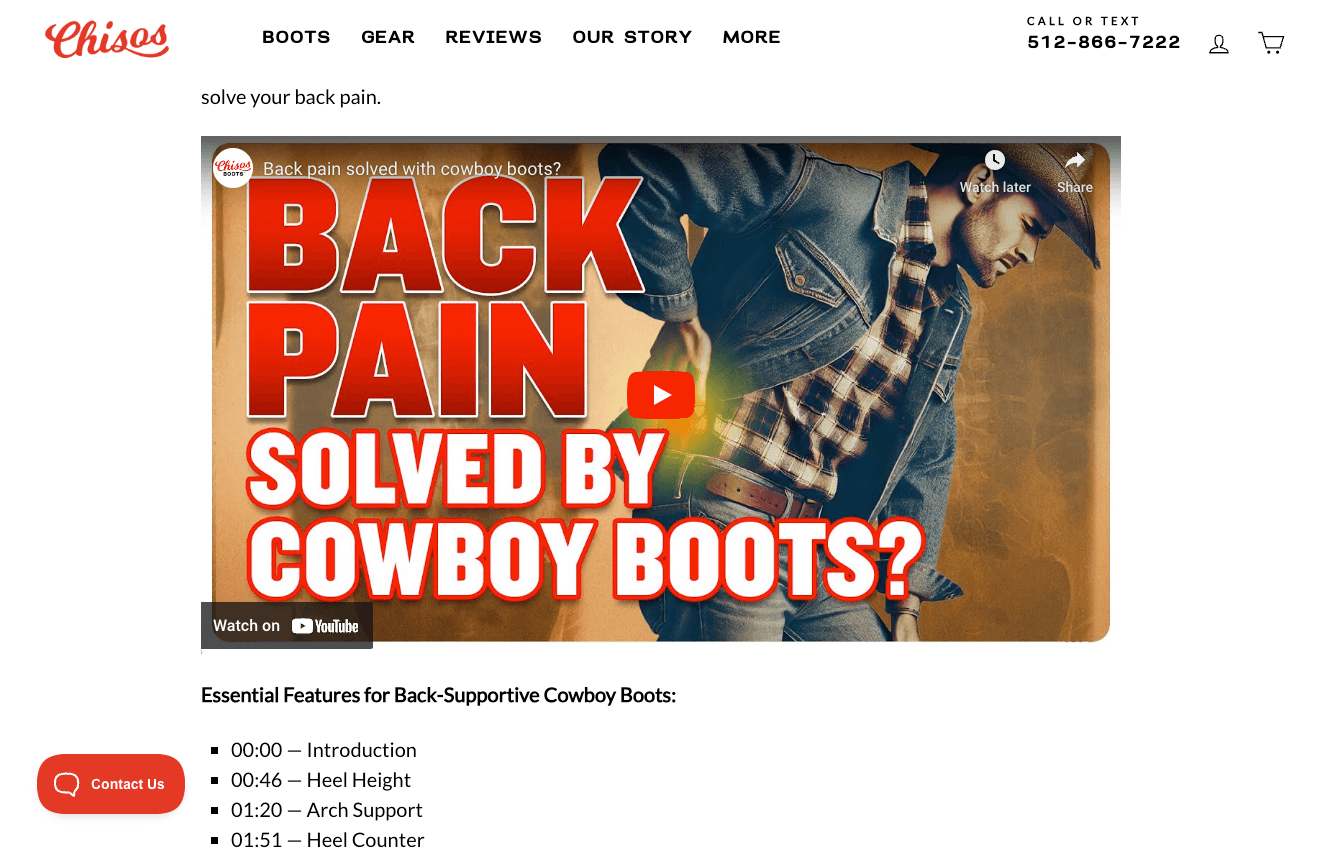
7. Use Customer Success Stories
Nearly all buyers conduct research before making a purchase.
While your blog can position your products as effective solutions, remember that people trust user-generated content (UGC) more than branded messaging and often rely on social proof when making decisions.
To leverage this, use your blog to showcase credible content formats like case studies and customer stories. These testimonials are especially valuable in the mid-to-low stages of the buyer’s journey, as they provide detailed insights, highlight product strengths, and offer real-life examples of how your solutions benefit users.
Example: Printful
A great example of a brand that uses blog social proof to influence consumer buying behavior comes from Printful.
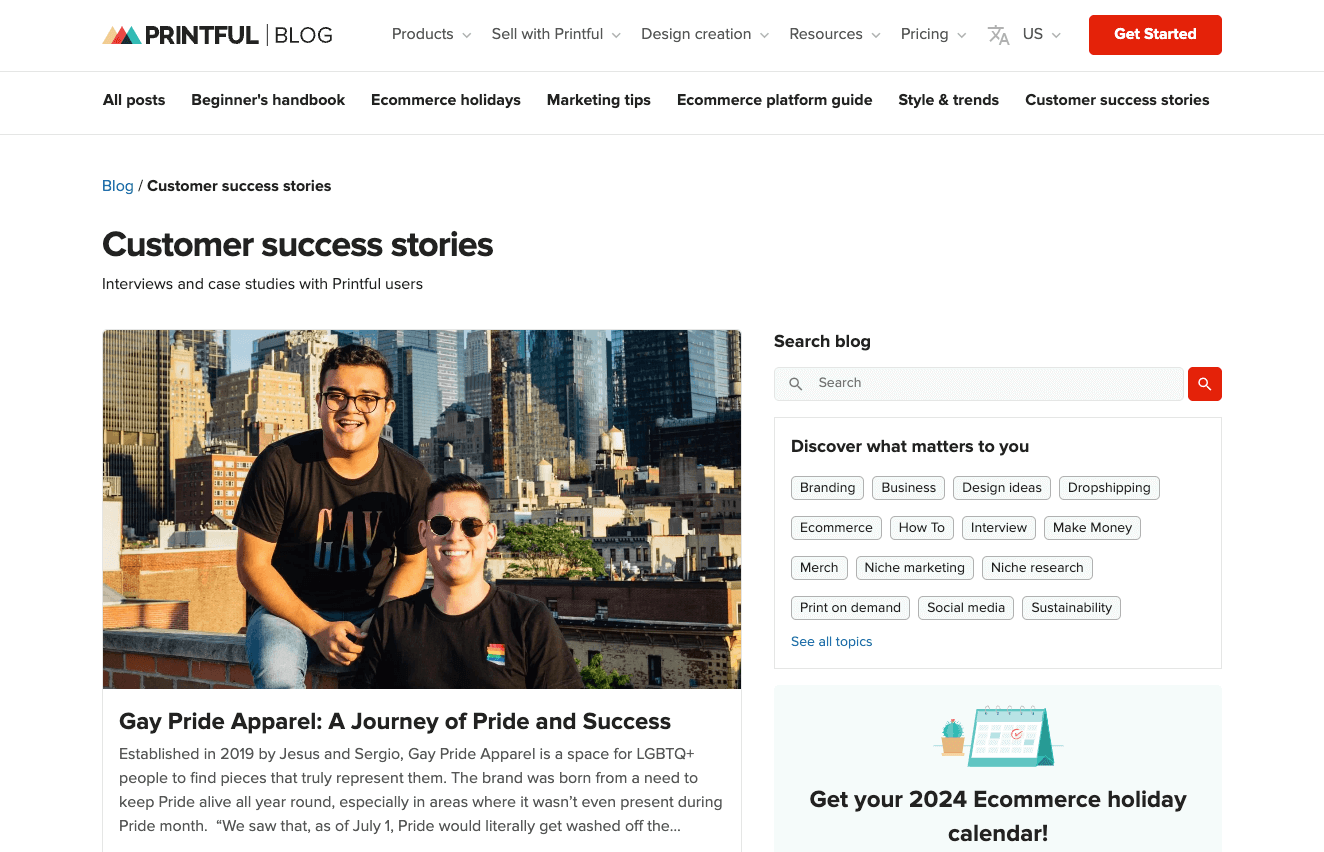
This brand dedicates an entire section of its Blog to Success Stories, knowing that these articles effectively elevate brand trust and (consequently) conversion rates.
What stands out in this brand’s approach is just how diverse Printful’s customer stories are. This helps the business demonstrate the full breadth of its products.
Plus, it emphasizes the sheer number of buyers who have put their trust in the brand and have seen positive returns from their investments.
8. Boost Loyalty by Enhancing the Customer Experience
As you focus on the production process for effective content that drives sales, don’t fall into the trap of only focusing on new customers.
Yes, publishing blog posts is a great way to reach new people, nurture them into high-quality leads, and encourage them to convert.
However, every business leader knows customer retention and loyalty deliver a much higher ROI than customer acquisition. You need to dedicate at least a section of your blog to existing customers.
You can significantly enhance customer satisfaction by developing educational tutorials that elevate the onboarding process. Plus, this type of content can be a great way to expose your customers to solutions that could supplement their product experience, directly boosting re-purchase intention among your clients.
Further reading: Visit our guide to learn how to create a loyalty program for your customers.
Example: Head
Head has a marvelous guide on “How to Hold a Tennis Racquet.” This article is a great introduction to racquet sports for beginners and a valuable resource for those who own a Head racquet.
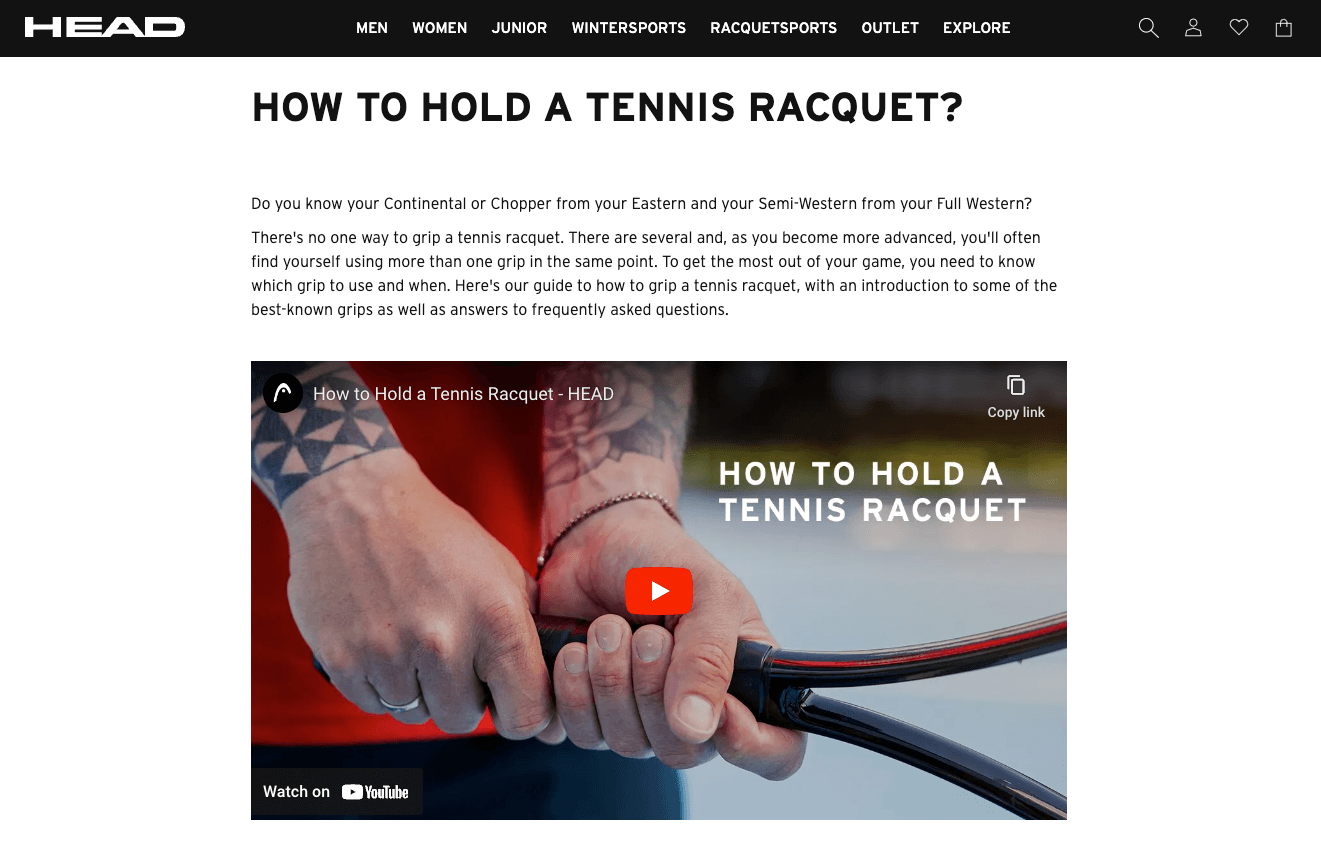
Plus, it can be seen as a refresher course for people who haven’t played in a while, giving the brand an excellent opportunity to remind existing customers about additional equipment that could help improve their game.
9. Use Analytics to Understand Each Blog Post’s Effectiveness
Creating great content is just the beginning. To increase your blog’s impact, you need to continuously monitor, analyze, and refine your content strategy to ensure strong ROI.
Track Key Performance Indicators (KPIs) To measure your blog’s effectiveness, use analytics tools to track essential metrics, such as:
- Organic traffic: See how well your content attracts visitors.
- Average time on page: Examine how engaging your posts are.
- Bounce rate: Identify whether readers are staying or leaving quickly.
- Conversion rate: Measure how many visitors take desired actions.
- Leads generated: Track how effectively your blog contributes to lead capture.
- Click-through rate (CTR): Assess the effectiveness of CTAs.
- SEO rankings: Monitor search visibility and content performance.
Furthermore, don’t hesitate to use A/B testing when making design or copywriting changes. This type of testing is a great way to gauge whether your posts are performing to their full potential and can indicate core areas to focus on to engage your unique target audience.
Power Up Your Content Marketing and Conversions
Focusing on conversions is a great way to elevate ROI if you’re considering investing in content marketing (or want to get more out of your current blog content).
Of course, you’ll need a strategic approach when using your blog to boost sales. Follow the guide above, pay sufficient attention to each step, and always analyze performance to ensure you’re getting the best possible outcomes.
If you combine your content distribution efforts with lead nurturing tactics—like social media or email marketing—you can rest assured that you’ll see exceptional results. This will help you increase sales and immensely contribute to brand reputation and customer loyalty.
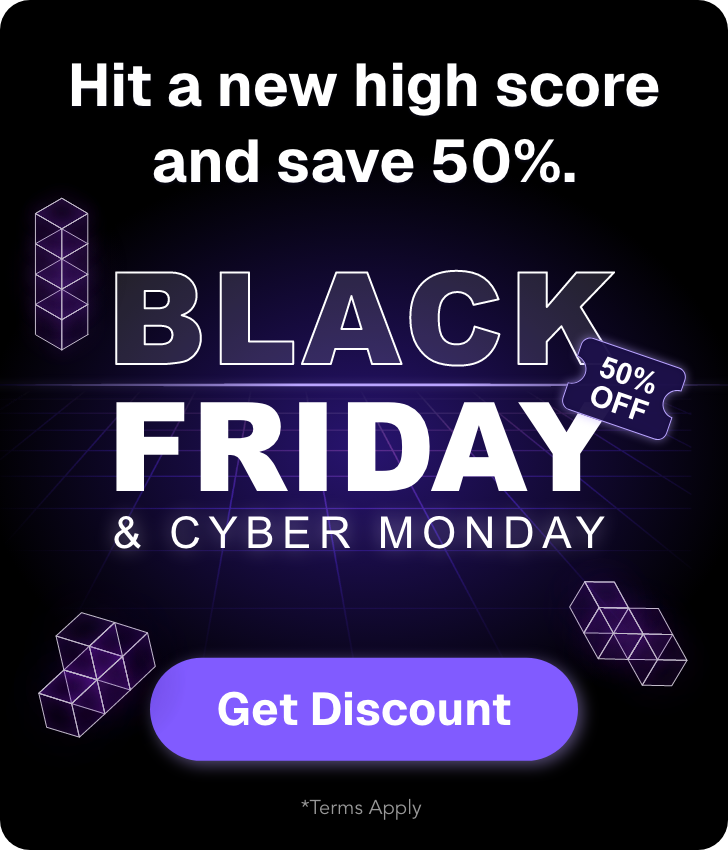


 Published by
Published by

 Published by
Published by
